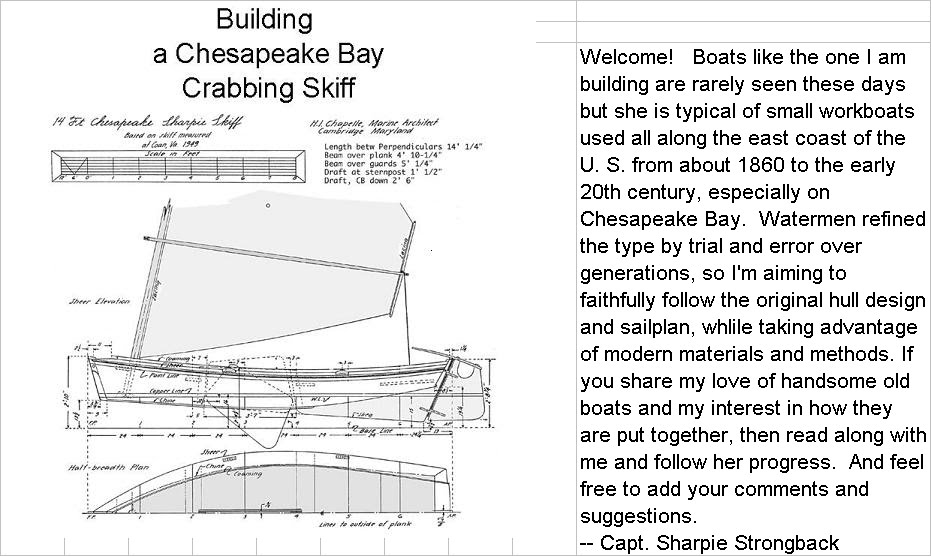It turns out you make a gauge as follows: take a straight piece of wood and mark two points a little farther apart than the width of the spar. In between the points, make two more marks spaced so that the distance between the end points is divided in the proportion of 3 1/2 : 5 : 3 1/2, Lay the gauge across the spar so that the end points line up with the edges of the spar, and mark where the two intermediate marks lie. Do this all along the spar and connect the points and you have lines to cut to. Repeat on the other three sides of the spar, and you have all the 45-degree cut lines. After it is 8-sided, you can move on to 16-siding by making a gauge with the proportions 3 1/2 : 1 1/4 : 2 1/2 : 1 1/4 : 3 1/2. But for a narrow spar like mine, the irregularities in the wood, the gauge and the width of pencil lines are enough to make it just as well to do the 16-siding by eye. After I had this all figured out, it was even hotter outside so I spent some more time looking into whether the ratio 3 1/2 : 5 : 3 1/2 (in other words, .29166:.41666:.29166) was actually some natural law property of eight sided polygons. After some headscratching and geometry, I figured out those numbers are a rule of thumb. The exact ratios would be .29289... : .41421... : .29289.... But the difference for a 4" spar is only 1/200", less than the thickness of a layer of epoxy.
Armed with this new knowledge and a new gauge, I ventured out and marked one side of the spar for 8-siding. I repeated on the second side, and did it better and quicker as I gained experience. But by then my sweat dripping on the mast kept the pencil from making a mark, and I was getting too dizzy to see the mark anyway. So I retreated inside. That's it. A day's work for an unaccountable amateur builder.
Here are some pictures I took in Quebec in June:
 This double-ender, about 20' long, with two rowing positions, served as the ferry on the St. Lawrence between the mainland and a mile or so out to Isle aux Coudres, 100 mi. east of Quebec City. It remained in service until 1962. The beautiful island is still a trip back in time, but now there's regular car ferry service.
This double-ender, about 20' long, with two rowing positions, served as the ferry on the St. Lawrence between the mainland and a mile or so out to Isle aux Coudres, 100 mi. east of Quebec City. It remained in service until 1962. The beautiful island is still a trip back in time, but now there's regular car ferry service.  A 13'8" skiff not too different from the one I'm bulding, designed in 1967 late in his life by Pete Culler, a legendary designer and boatbuilder. One objectionable feature is the rudder which is deeper than the skeg. The rudder would be the first thing to run aground unless the centerboard were all the way down, causing the boat to head downwind and possibly capsize. I had many exciting moments in my brother's Bahama dinghy which was fitted out the same way. The first sign of shallow water was when the rudder was knocked out of its gudgeons, leaving me hanging over the transom trying to rehang the rudder while the boat sailed wherever it wished, usually shallower water.
A 13'8" skiff not too different from the one I'm bulding, designed in 1967 late in his life by Pete Culler, a legendary designer and boatbuilder. One objectionable feature is the rudder which is deeper than the skeg. The rudder would be the first thing to run aground unless the centerboard were all the way down, causing the boat to head downwind and possibly capsize. I had many exciting moments in my brother's Bahama dinghy which was fitted out the same way. The first sign of shallow water was when the rudder was knocked out of its gudgeons, leaving me hanging over the transom trying to rehang the rudder while the boat sailed wherever it wished, usually shallower water.
No comments:
Post a Comment